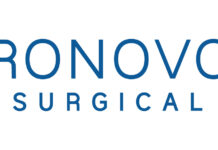Experts believe that these advances will ultimately improve the treatment of stroke patients, giving emergency medical technicians (EMTs) the ability to quickly scan the skulls of stroke victims while inside the ambulance.
Senior study author Stephen Smith said: “This is an important step forward for scanning the vessels of the brain through the skull, and we believe that there are now no major technological barriers to ultimately using 3D ultrasound to quickly diagnose stroke patients.”
“Speed is important because the only approved medical treatment for stroke must be given within three hours of the first symptoms.”
The team injected 17 people with contrast dye to enhance the images then aimed ultrasound “wands” into the brain.
The researchers found that 3D ultrasound sensors could compensate for the skulls thickness and for the first time provide real-time clear ultrasound images of the brain arteries.
Stephen Smith added: “It’s safe to say that within five to 10 years, the technology will be minaturised to the point where EMTs in an ambulance can scan the brain of a stroke patient and transmit the results ahead to the hospital.”
















